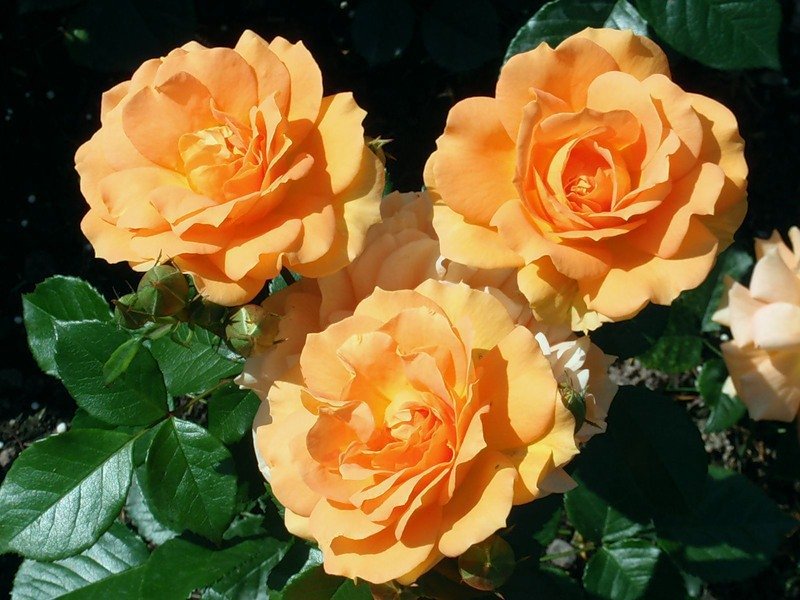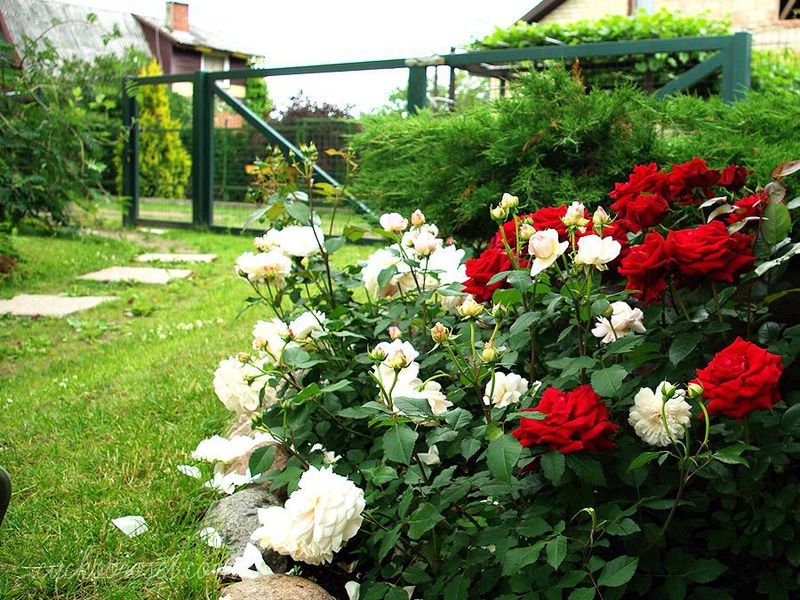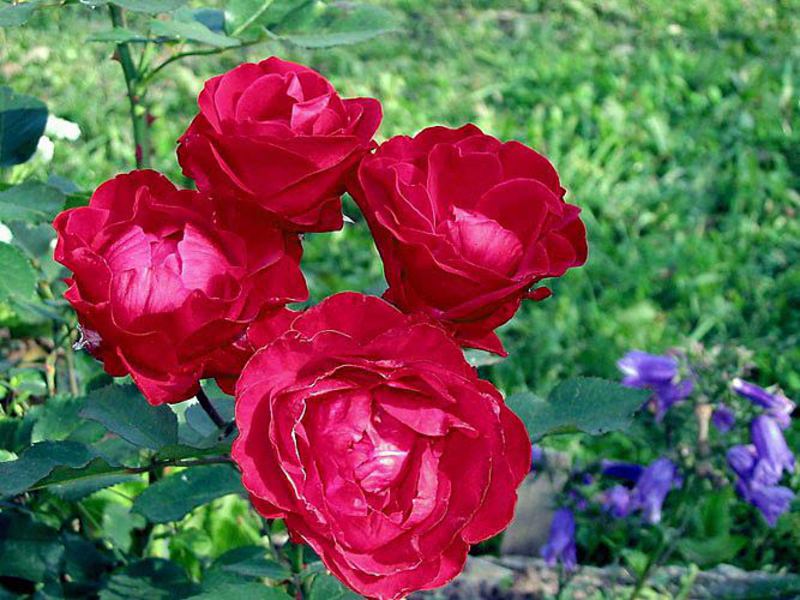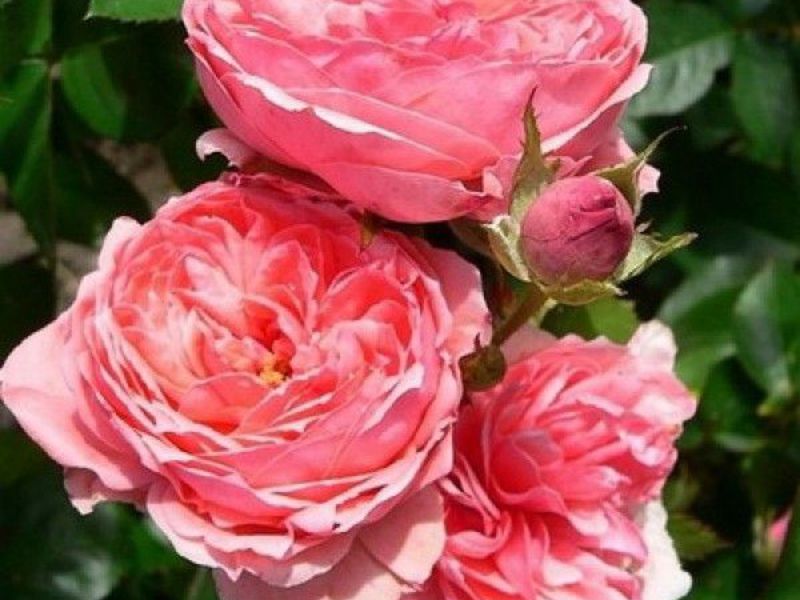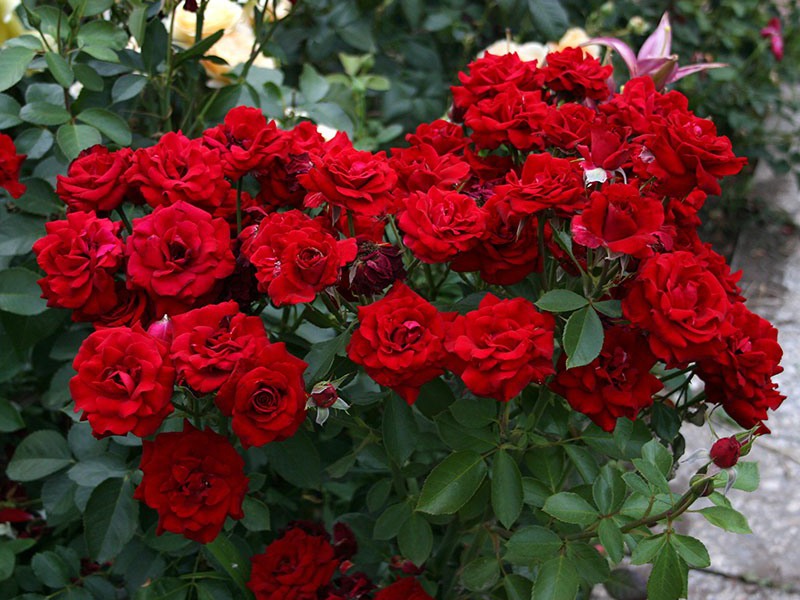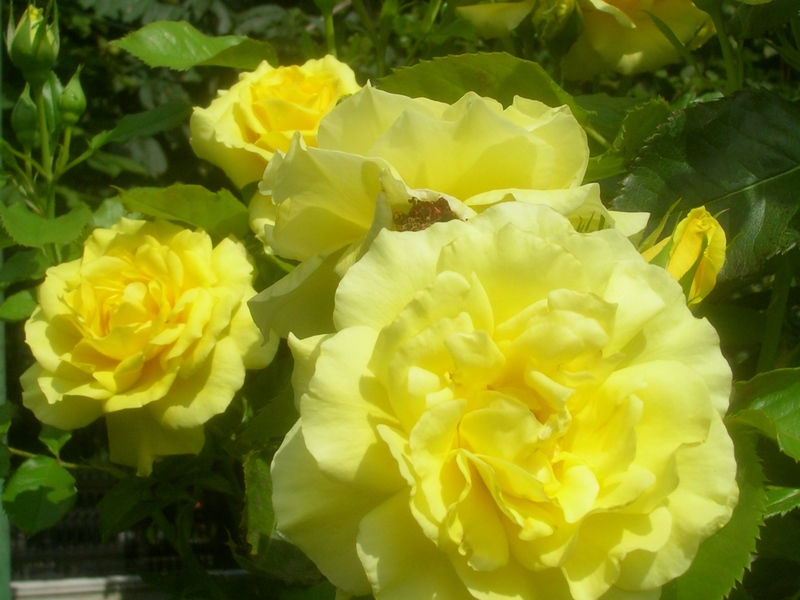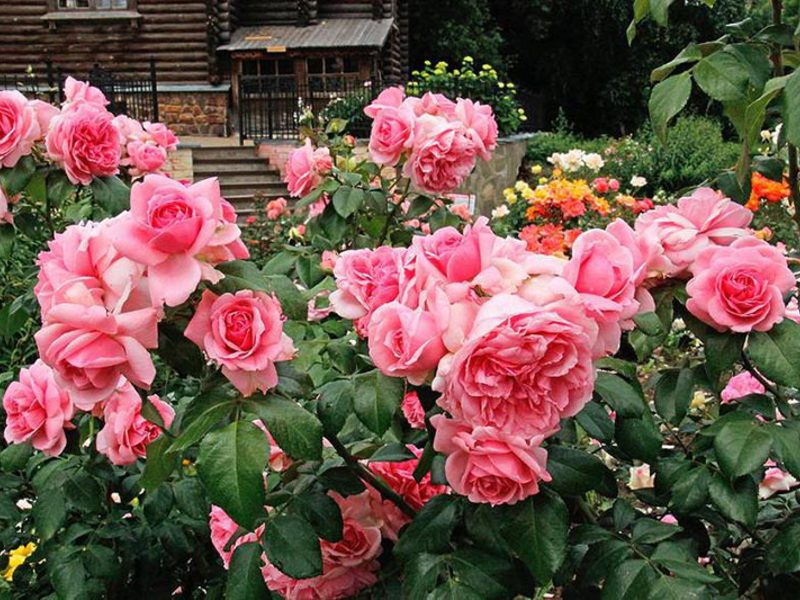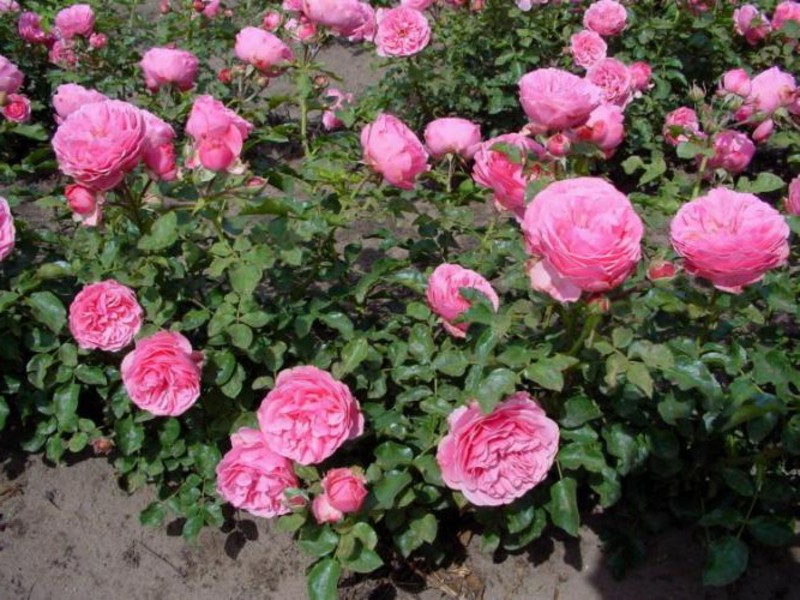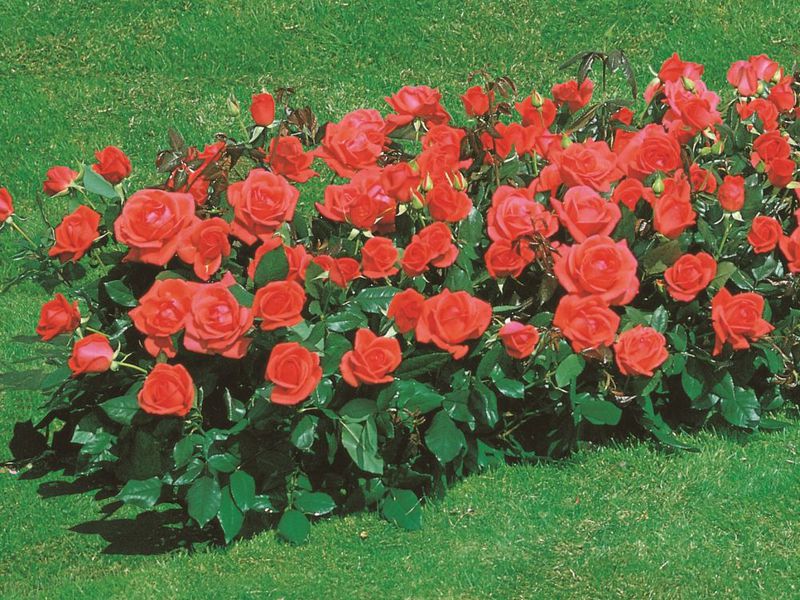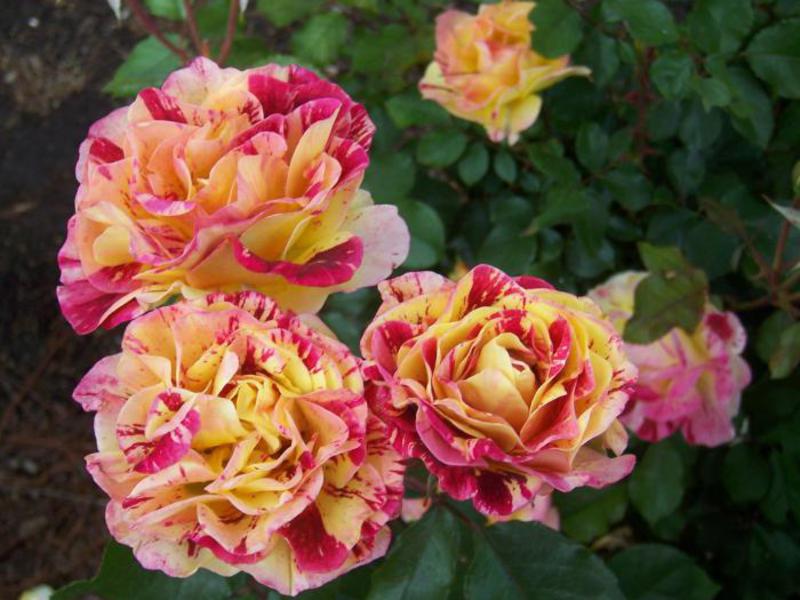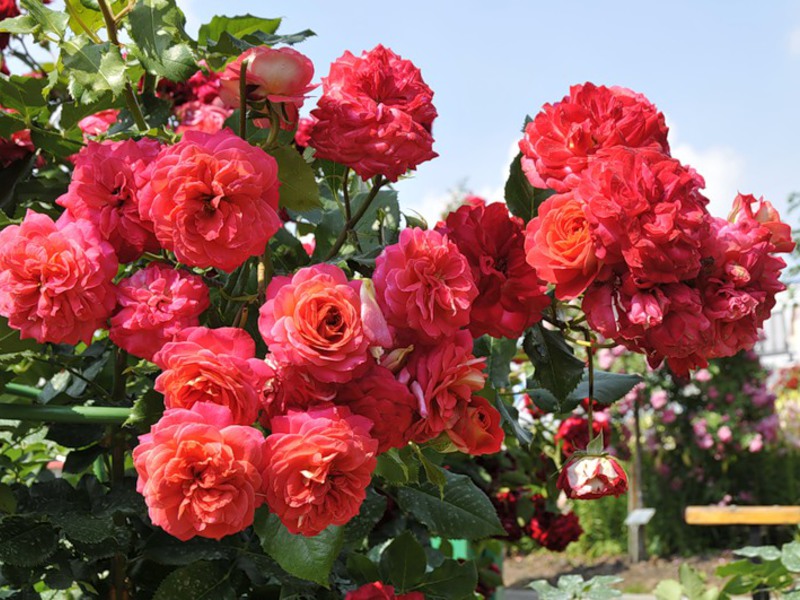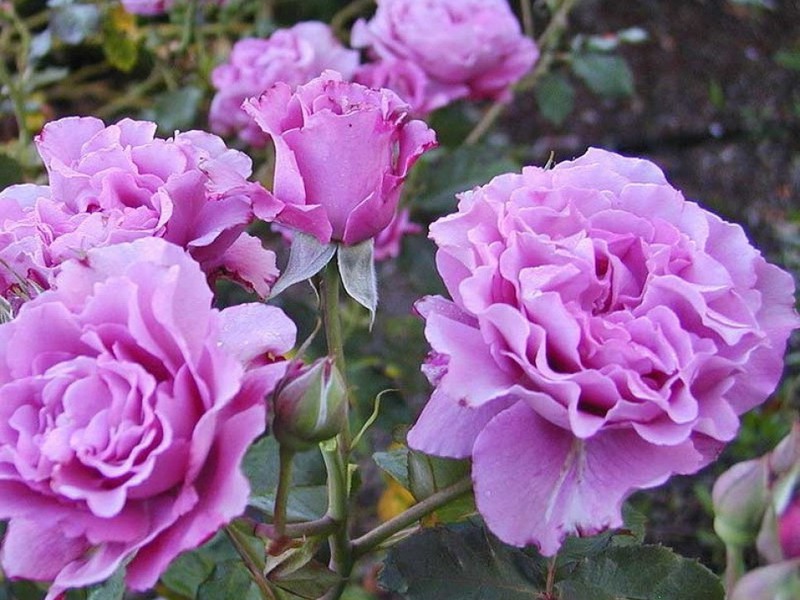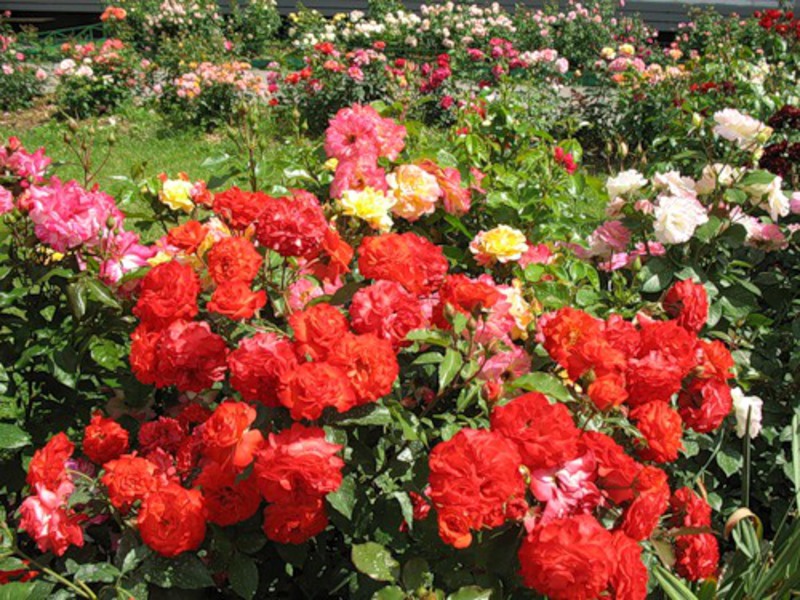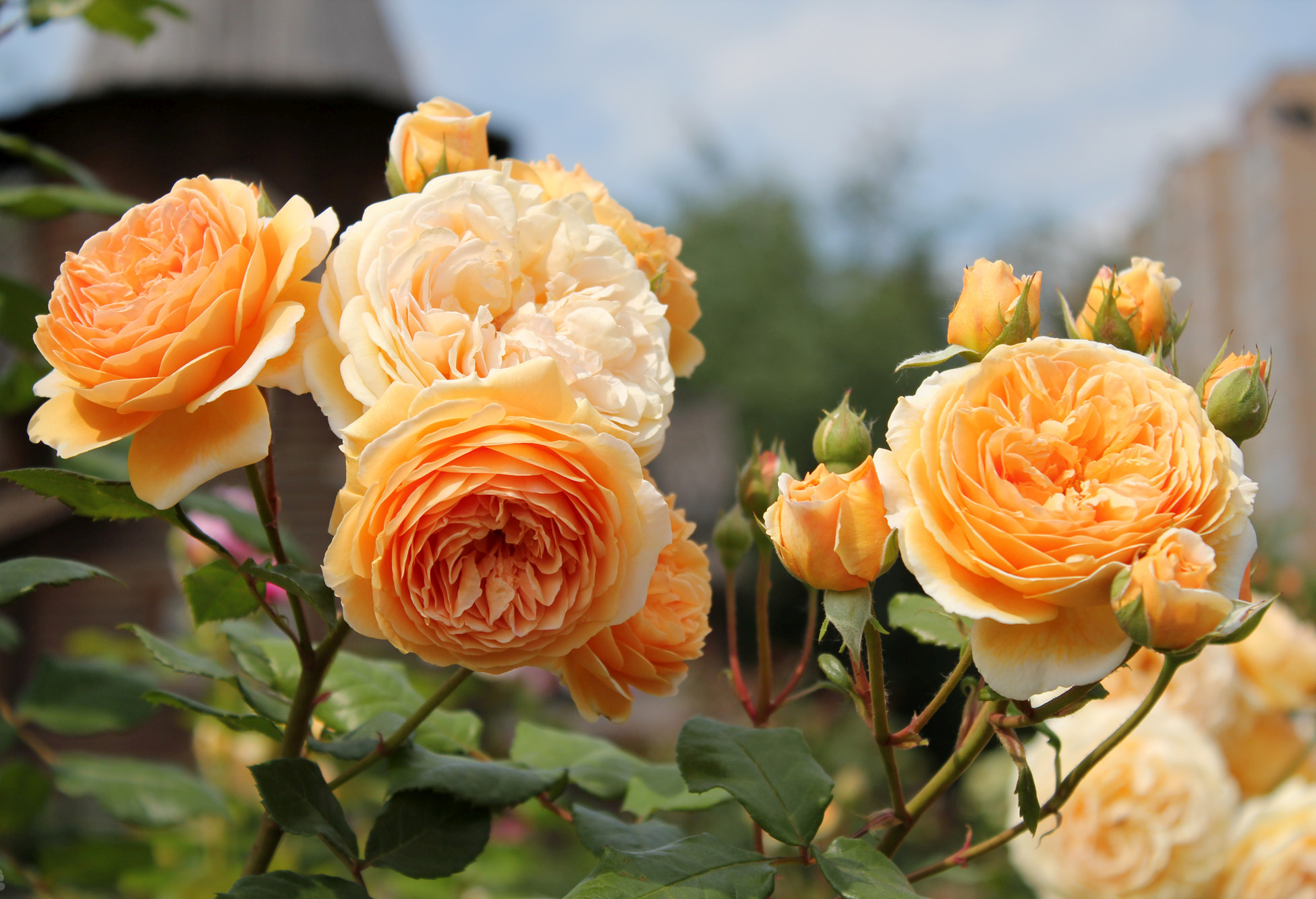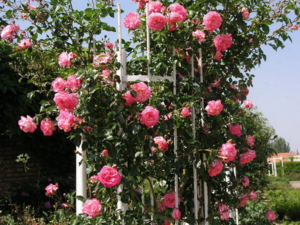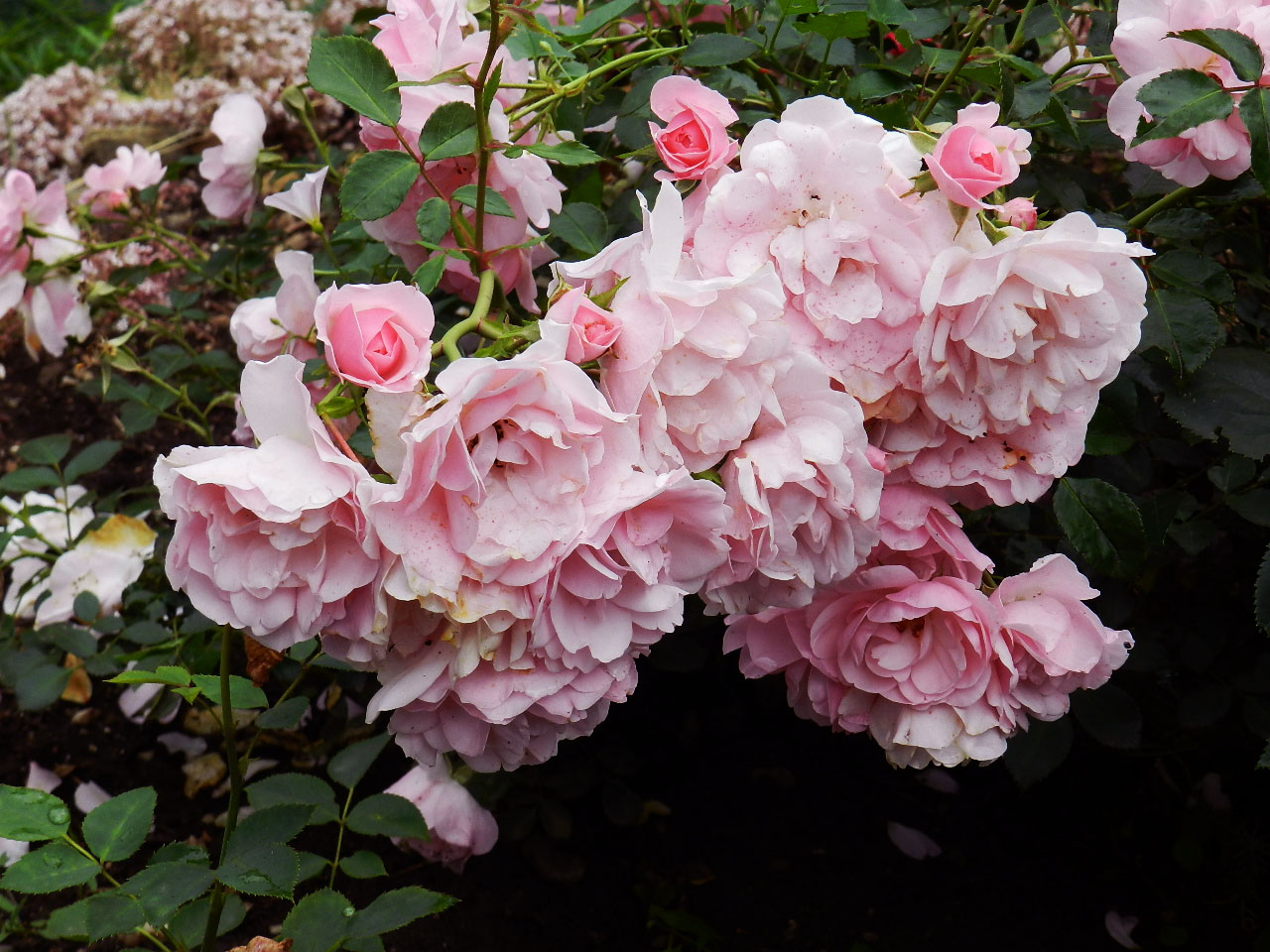In the design of garden plots, delightful floribunda roses have recently become very popular. They were bred by crossing polyanthus, nutmeg and tea roses. The result is a beautiful and long-flowering winter-hardy and disease-resistant plant. Floribunda roses are distinguished by excellent quality of flowers, an abundance of colors, decorativeness and unpretentiousness. Planting and caring for them is not a big deal, so even an inexperienced gardener can grow this beautiful flower on his site.
Content
Floribunda rose: general description, varieties, photos
Roses of this type, depending on the variety, in height can reach from 30 to 100 cm... At the top of each shoot, a whole bunch of brightly colored flowers is formed. They can be double or simple, goblet or cupped. Flowers ranging in diameter from 4 to 10 cm bloom in mid-summer. Their advantage is that they bloom not in one wave, but throughout the summer they form more and more flowers that adorn the garden until autumn.
Depending on your preference, floribunda roses can be grown as a shrub, stem or pot plant. They can decorate a garden plot, a loggia, a gazebo or an apartment. They stand well in the cut, so they are often used for making bouquets.
Popular varieties of floribunda roses
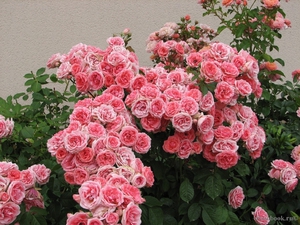 The species range of these flowers is so great that gardeners are lost in the choice, not knowing which of the many varieties to plant on their site. To facilitate the selection in our gallery, you can see photos of various roses of floribunda rose varieties. A description of some of them can be studied below.
The species range of these flowers is so great that gardeners are lost in the choice, not knowing which of the many varieties to plant on their site. To facilitate the selection in our gallery, you can see photos of various roses of floribunda rose varieties. A description of some of them can be studied below.
Carte Blanche... Bushes up to one meter in height have dense decorative foliage and medium-sized double flowers of pure white color. The variety blooms profusely until autumn and is rarely affected by fungal diseases.
Galaxy. On bushes 70-80 cm high, medium-sized double flowers form and bloom throughout the season. They are characterized by a pastel yellow color and a red tint around the edges of the petals. All the beauty of this flower can be seen after its complete dissolution. The buds have the original scent of linseed oil.
Bluvender... The plant is a sprawling bush, the height of which can reach 60 cm. The stems are covered with shiny dark green leaves. Heap inflorescences consist of medium-sized double flowers of pink-salmon shade. This variety is often used for planting in the foreground. Disease resistant and has many high awards.
Blue Baj. This variety is distinguished by flowers of a very original color. A large number of pale bluish-lilac buds are formed on the shoots, which appear blue against a yellow background. The plant reacts to air humidity, temperature changes and can be susceptible to various diseases. However, flowers of an extraordinary shade make it very popular.
Niccolo Paganini... The plant represents powerful bushes abundantly covered with decorative foliage. Large inflorescences of this variety are collected from fragrant dark red roses of a classic shape. Differs in excellent health and is used for decorating plots and making bouquets.
Frisia. On the shoots of dense, compact bushes 70 cm high, extremely fragrant double flowers of bright yellow color are formed. Their peculiarity is that they do not fade even in the sun, which is extremely valuable for roses. This variety is one of the first to bloom, and blooms until the very frost.
Lilly Marlene... A plant with a proven track record, grown in nearly every greenhouse in the world. The bush, 70 cm high, is abundantly strewn with shiny green foliage with a bronze sheen. Medium-sized, slightly double, fiery red flowers with a light aroma.
Sangria. This rather new variety is distinguished by bright crimson flowers of an interesting constitution, which consist of two tiers. Their lower petals have a diameter of 6 cm, and the pointed inner ones with a diameter of 3 cm are tightly collected. The color intensity remains throughout the season. The plant can grow in almost any conditions and is not susceptible to disease. Rejuvenating pruning is required for bushes no more than once every 3-5 years.
Stromboli... An erect, vigorous shrub 70-80 cm high, distinguished by shiny dark green leaves and double, bright red cupped flowers. Inflorescences consist of 3-10 buds, each of which has velvety, grooved petals. This variety has a faint flower aroma and is characterized by long and abundant flowering.
Floribunda rose: planting and care, photo
The site for planting a garden plant must be chosen very carefully, since roses love warmth and well-lit places protected from the cold wind.
Soil preparation
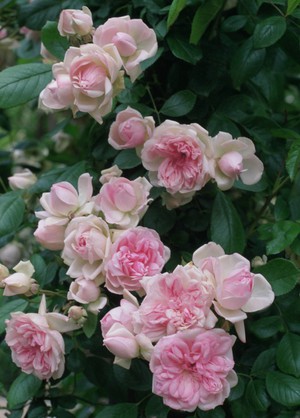 The soil for planting shrubs must be prepared in advance. The area where roses will be planted is cleared of debris, weeds and dug up. In the spring, before landing, holes are dug, the size of which should be at least 50x50 cm. The root system of the plant does not like cramped conditions in which it develops poorly. The grafting site should be two to three centimeters below the soil surface, which will lead to the formation of additional roots. With a group planting, up to seven bushes are planted per square meter of the site.
The soil for planting shrubs must be prepared in advance. The area where roses will be planted is cleared of debris, weeds and dug up. In the spring, before landing, holes are dug, the size of which should be at least 50x50 cm. The root system of the plant does not like cramped conditions in which it develops poorly. The grafting site should be two to three centimeters below the soil surface, which will lead to the formation of additional roots. With a group planting, up to seven bushes are planted per square meter of the site.
A certain earthen composition should be added to each hole, for the preparation of which you will need:
- garden soil - 2 parts;
- peat - 1 part;
- humus - 1 part;
- sand - 1 part;
- weathered crushed clay - ½ part.
Add a handful to the resulting mixture bone meal and superphosphate... The bushes are planted in prepared holes, sprinkled with an earthen mixture and watered abundantly. The soil around the plant is covered with sawdust, which will help to retain moisture and prevent a large number of weeds from germinating.
Care features
Floribunda rose care includes:
- Timely watering.
- Top dressing.
- Pruning.
- Shelter for the winter.
 Watering roses must be timely and abundant. Plants do not like drying out of the soil and can react by dropping the buds. After a hot day, the leaves can be sprayed with room temperature water from a spray bottle. The soil around the plant must be periodically cleaned of weeds and loosened.
Watering roses must be timely and abundant. Plants do not like drying out of the soil and can react by dropping the buds. After a hot day, the leaves can be sprayed with room temperature water from a spray bottle. The soil around the plant must be periodically cleaned of weeds and loosened.
While caring for floribunda roses don't forget about feedingheld throughout the season. It is recommended to alternate organic and mineral fertilizers. From organic dressings you can use:
- humus;
- compost;
- mullein.
The following are used as mineral fertilizers:
- potassium;
- urea;
- saltpeter.
Shrubs will respond to timely feeding by forming a large number of buds and prolonged flowering.
Pruning
In the fall and spring, floribunda rose bushes are necessary rejuvenate and shape... The first and main pruning is carried out at the very beginning of the growing season.
Moderate pruning is used for the successful development of old shoots and the formation of new shoots and long, abundant flowering. For this:
- shoots are shortened by 4-6 eyes;
- old branches that are more than two years old are completely cut out;
- the lateral processes on the main stem are shortened.
In the fall, the bushes are pruned just before they are sheltered for the winter. For this, the shoots are shortened by about 40 cm. Rose varieties Eslanda Robson, Red Poppy, Flame of the East, Danko's Heart and some others are additionally pruned in summer. This promotes their continuous flowering for three to four periods.
Shelter bushes for the winter
In the middle zone of our country, the care of roses includes them protection from winter cold... To do this, the bushes are cleared of inflorescences and leaves, and the soil is spud around them. The result should be a mound about 30 cm high. The cut bushes are first covered with leaves or spruce legs, and then with a non-woven material. With such insulation, the plants will survive any frosts and will actively begin to grow in the spring. However, when warm weather is established, the shelter must be removed in time. Otherwise, without air, under the influence of heat, the bushes will begin to rot and rot.
Floribunda roses propagation
The plant propagates by cuttings, which are harvested from lignified shoots. Cuttings are taking root in compliance with the following recommendations:
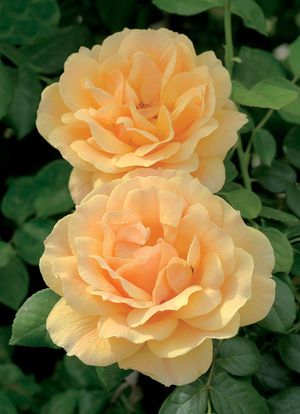 The branches are cut 0.5 cm above the bud. They should be about 8 cm long and about the width of a pencil.
The branches are cut 0.5 cm above the bud. They should be about 8 cm long and about the width of a pencil.- The bottom cut is made at an angle of 45 degrees, and the top one at a right angle.
- Thorns and leaves are removed from the lower part of the cutting, and the segments are treated with preparations containing phytohormones.
- Twigs are buried in half into a hole 15 cm deep. The distance between them in the garden should be from 15 to 30 cm.
- From above, the seedlings are covered with polyethylene, so that the result is a greenhouse.
- Caring for cuttings consists in airing, watering, loosening the soil and feeding.
- For the winter, grown young plants are first covered with two layers of non-woven material, which is covered with plastic wrap on top.
In one place, the young take root and develops over two years... In the third year, the bushes are planted in their permanent place.
Floribunda roses are becoming more and more popular due to their advantages. They are good in a flower garden as tapeworms and in group plantings, they can be used to compose and create colorful spots on lawns. With proper planting and compliance with all care requirements, all summer until autumn you can admire a spectacular and bright flower garden with floribunda roses.
